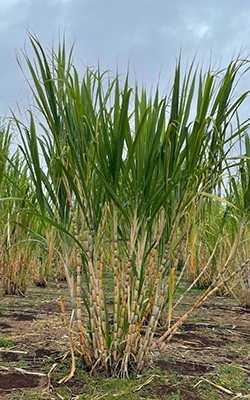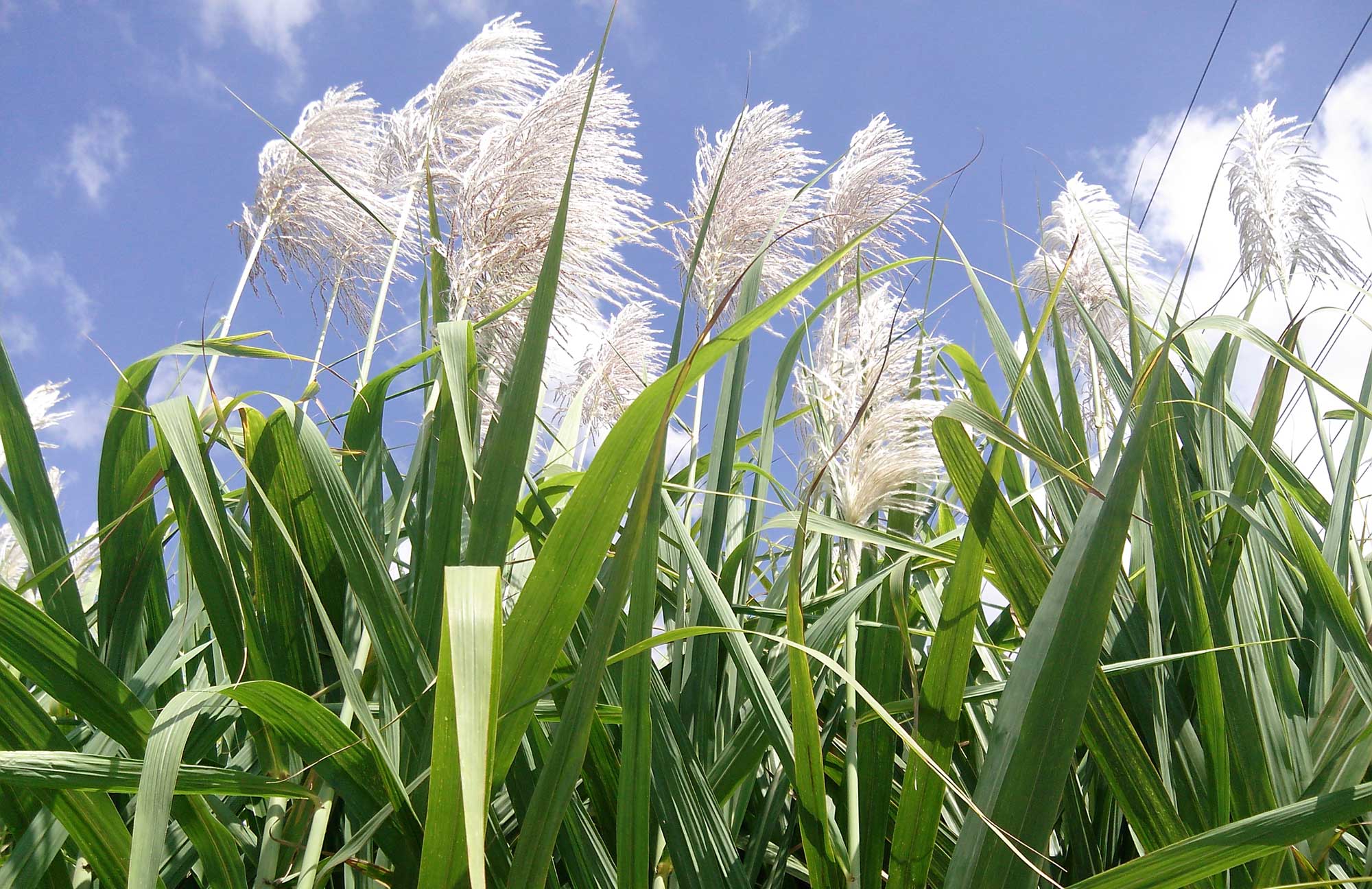Unveiling the Relevance of Sugar Canes: What Are Sugar Canes Used For in the Cane Sugar Sector?
Sugar canes offer as the foundation of the cane sugar sector, mostly supplying the raw material needed for sugar production. Their capacity to transform sunlight into sucrose through photosynthesis is vital. Beyond their sweetening homes, sugar canes locate energy in numerous cooking applications and arising markets. The full level of their effect expands past the kitchen area. This discussion will certainly check out the complex functions of sugar walking sticks in both industry and economy.
The Function of Sugar Canes in Sugar Manufacturing
Sugar walking canes function as the foundational resources in the walking cane sugar industry, playing a critical function in the production process. These tall, perennial lawns grow in exotic and subtropical environments, where they soak up sunshine and nutrients to generate sucrose. The harvesting of sugar walking canes typically occurs when the plants reach maturity, maximizing their sugar content.Once harvested, the walking canes go through crushing to extract the juice, which has liquified sugars. This juice is then clarified and concentrated through dissipation, changing it into a syrup. Ultimately, formation takes place, enabling the splitting up of sugar crystals from the remaining syrup.The extracted sugar undertakes further refining to achieve the desired purity and quality - What Are Sugar Canes Used For. Consequently, the whole procedure highlights the crucial payment of sugar canes to sugar manufacturing, emphasizing their significance as both a basic material and a catalyst in the manufacturing of cane sugar
:max_bytes(150000):strip_icc()/GettyImages-564187083-721fb5bc6c764f929f5134d736828a4f.jpg)
Diverse Applications in Food and Beverage Sector
In the food and drink industry, sugar cane serves numerous vital functions. It acts not just as a key sugar in numerous items yet additionally as a flavor agent that boosts preference profiles. Additionally, its elements play a significant duty in fermentation and purification processes, adding to the manufacturing of alcoholic drinks.
Sweetener in Products

The convenience of cane sugar as a sweetener makes it a staple in a broad range of food and beverage products. Commonly made use of in baked goods, it enhances the preference and structure of cakes, cookies, and breads by giving wetness and promoting browning throughout baking. In beverages, cane sugar is a preferred choice for sweetening juices, sodas, and teas, permitting a balanced taste profile. Additionally, it serves as a necessary active ingredient in marinates, dressings, and sauces, contributing to a harmonious blend of flavors. Cane sugar's ability to liquify rapidly and its consistent sweetness account better solidify its role as a favored sugar - What Are Sugar Canes Used For. On the whole, its diverse applications underscore the essential function of cane sugar in the culinary landscape
Flavoring Representative Use
Utilizing cane sugar as a flavor representative extends past its role as a plain sugar, enhancing a variety of cooking creations. In the food and drink sector, it enhances taste accounts by stabilizing level of acidity and resentment, making it a vital component in marinates, dressings, and sauces. In addition, walking cane sugar adds to the overall mouthfeel, giving a pleasant appearance in baked goods and confections. Its caramelization during cooking includes deepness to both wonderful and savory meals, while additionally functioning as a chemical in jams and jellies. In drinks, cane sugar is used to intensify tastes in cocktails and soft beverages, guaranteeing a much more pleasurable drinking experience. This adaptability emphasizes its value in varied cooking applications.
Fermentation and Distillation
Walking cane sugar plays a significant role in fermentation and distillation procedures, which are vital in creating a variety of liquors and foodstuff. Throughout fermentation, yeast converts sugars into alcohol and carbon dioxide, a fundamental action in crafting beverages like rum and vodka. Distillation even more cleanses these alcoholic combinations, boosting and focusing flavors alcohol content. Beyond drinks, walking stick sugar is also integral in producing vinegar and specific preservative with fermentation. The convenience of cane sugar enhances the flavor accounts and top quality of these items, making it essential in the food and drink industry. Its payment not just supports conventional methods but also cultivates development in crafting brand-new tastes and experiences for customers.
Sugar Canes in Biofuel Manufacturing
As rate of interest in eco-friendly power sources expands, sugar walking sticks are progressively identified for their possibility in biofuel production. The biomass stemmed from sugar walking canes can be transformed into ethanol, a lasting fuel choice that decreases greenhouse gas discharges compared to nonrenewable fuel sources. This process generally entails fermenting the sugar drawn out from the cane, which is after that distilled to generate high-purity ethanol appropriate for use in vehicles.Additionally, sugar cane bagasse, the coarse deposit left after juice extraction, can be made use of as a feedstock for bioenergy. It can be melted to create vapor and power, adding to energy self-sufficiency in sugar mills. Countries such as Brazil have actually effectively integrated sugar cane biofuel into their energy policies, causing minimized dependence on imported fuels - What Are Sugar Canes Used For. On the whole, sugar canes stand for a promising method for biofuel manufacturing, lining up agricultural techniques with environmental sustainability goals
Industrial Uses of Sugar Canes
While usually recognized primarily for sugar manufacturing, sugar walking sticks also have diverse industrial applications that prolong well past the food industry. The fibrous by-products of sugar cane, referred to as bagasse, offer as a useful source in different industries. Bagasse is generally used as a biofuel, generating power in sugar mills and various other centers. Furthermore, it can be refined right into paper, cardboard, and eco-friendly products, promoting lasting practices.In enhancement, sugar canes add to the production of molasses, a by-product utilized in the fermentation process for producing alcohol and yeast. This versatility makes sugar walking sticks important to the beverage and pharmaceutical markets. In addition, sugar cane extracts are employed in the cosmetics market, giving all-natural active ingredients for skin care and beauty products. Generally, the commercial usages of sugar canes highlight their importance beyond sugar, showcasing their duty in promoting sustainability and sustaining numerous fields.
Economic Influence of Sugar Cane Cultivation
The financial impact of sugar cane cultivation is considerable, primarily through work production and export earnings generation. This industry not only gives employment possibility in backwoods but additionally contributes considerably to national economic situations via exports. Comprehending these facets highlights the vital role sugar walking stick plays in both local and international markets.
Job Development Opportunities
Often forgotten, the sugar walking stick sector plays a vital duty in work development, substantially impacting local go right here economic climates. The farming, harvesting, and handling of sugar walking cane create numerous employment possibility, from field employees to factory team. In several click for more areas, these work give resources for hundreds of family members, contributing to community stability and development. Furthermore, ancillary industries such as transportation, tools production, and retail gain from the sugar walking cane market, additional increasing work alternatives. Seasonal work during planting and harvest times likewise supports temporary settings, permitting workers to earn income in otherwise lean periods. In general, the sugar walking cane industry works as a crucial economic engine, promoting work development and improving the top quality of life for numerous individuals and areas.
Export Profits Generation

Lasting Practices in Sugar Walking Cane Farming
While traditional sugar walking cane farming practices have usually led to ecological destruction, an expanding variety of farmers are embracing lasting approaches that focus on ecological equilibrium. These techniques consist of plant turning, which improves dirt fertility and lowers parasite outbreaks, and making use of natural plant foods to minimize chemical drainage. In addition, some farmers are applying incorporated pest management strategies, which focus on making use of all-natural predators and biopesticides as opposed to hazardous chemicals.Water preservation techniques, such as drip irrigation, are likewise getting grip, permitting effective water usage while maintaining crop health and wellness. Furthermore, many farmers are spending in sustainable energy resources, such as biomass from sugar walking stick waste, to power operations and lower their carbon footprint. These lasting methods not just secure environments however also boost the long-term practicality of sugar walking cane farming, making certain index that it can remain to satisfy international sugar needs while decreasing ecological influence.
Frequently Asked Questions
Exactly How Are Sugar Canes Harvested and Processed?
Sugar canes are gathered using mechanical cutters or hand-operated approaches, after that delivered to factories. There, they undertake cleaning, squashing, and removal procedures to obtain juice, which is after that cleared up, evaporated, and taken shape into sugar.
What Is the Nutritional Worth of Sugar Walking Cane?
The nutritional worth of sugar walking cane consists of carbohydrates, primarily in the kind of sucrose, together with trace amounts of vitamins and minerals like calcium and potassium. It is reduced in healthy protein and fat web content overall.
Can Sugar Cane Be Grown in Non-Tropical Regions?
Sugar cane can be expanded in non-tropical areas, but it needs particular conditions such as adequate heat, wetness, and appropriate dirt. Adaptation and cultivation techniques are necessary for effective development outside typical tropical climates.

What Pests and Diseases Impact Sugar Cane Crops?
Parasites and illness considerably influence sugar walking stick plants. Common hazards consist of the sugarcane borer, red rot, and mosaic virus, which can decrease return and quality, necessitating effective administration practices to shield these essential farming sources.
Exactly How Does Sugar Walking Cane Farming Impact Citizen Communities?
Sugar walking stick farming greatly impacts regional communities by supplying employment possibility, promoting financial growth, and supporting local services. It can also lead to ecological issues and social obstacles, influencing area health and wellness and sustainability. Sugar walking sticks offer as the foundation of the walking stick sugar industry, primarily providing the raw product needed for sugar manufacturing. Sugar canes offer as the fundamental raw material in the cane sugar market, playing a critical duty in the manufacturing procedure. The harvesting of sugar canes usually takes place when the plants reach maturity, optimizing their sugar content.Once collected, the canes undergo crushing to extract the juice, which consists of dissolved sugars. While frequently acknowledged mainly for sugar manufacturing, sugar canes likewise have diverse industrial applications that expand well past the food market. As global demand for sugar continues to increase, nations rich in sugar walking cane sources utilize on this opportunity, exporting raw sugar and fine-tuned products to global markets.